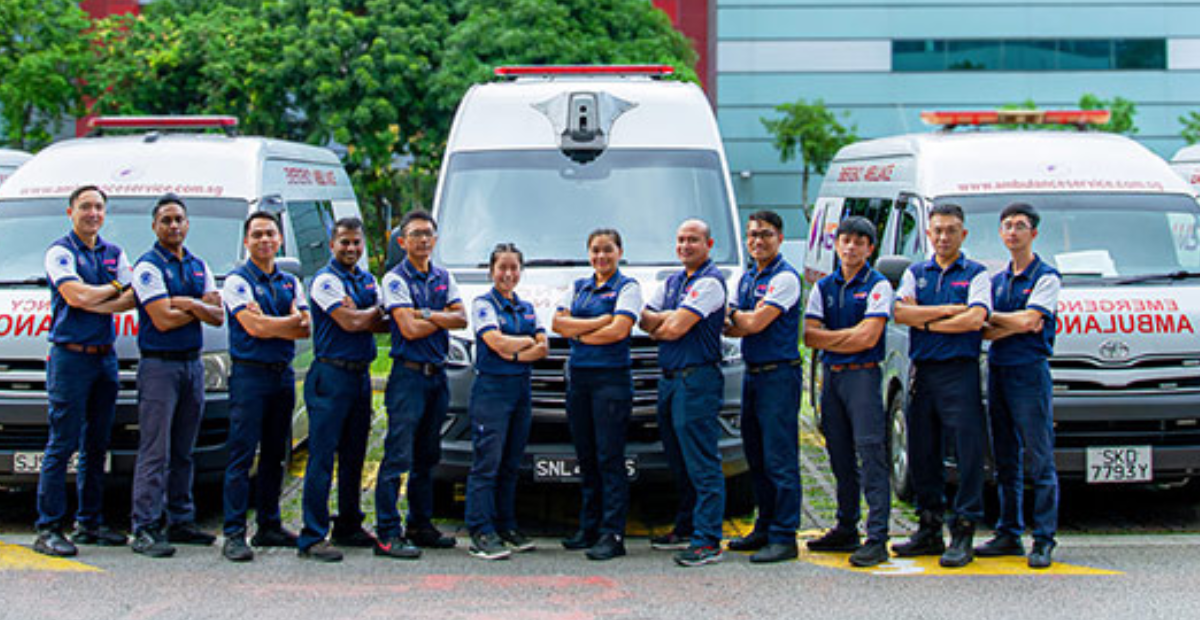Comprehensive Guide to Ambulance Service Singapore: Ensuring Timely Medical Assistance
When it comes to emergency and non-emergency medical transport, choosing a reliable Ambulance Service Singapore is crucial for ensuring the safety and well-being of patients. Whether it’s a life-threatening emergency, a transfer between hospitals, or a scheduled medical appointment, professional ambulance services play a vital role in the healthcare ecosystem. In a fast-paced country like Singapore, where every second counts, dependable ambulance services provide the necessary support to ensure patients get the right care at the right time.
The Importance of Ambulance Services in Singapore
Ambulance services form the backbone of emergency medical response in Singapore. These services not only provide immediate transport but also deliver life-saving medical care en route. Trained paramedics, advanced medical equipment, and well-maintained vehicles ensure that patients receive appropriate treatment even before arriving at the hospital.
In Singapore’s highly urbanized setting, traffic and accessibility can pose challenges during emergencies. Having a professional ambulance service ensures quick navigation through these obstacles, supported by priority routes and experienced drivers trained to handle high-pressure situations.
Types of Ambulance Services Available
Not all ambulance services are the same. Depending on the situation, patients and their families may require different levels of care. Common types of ambulance services in Singapore include:
1. Emergency Ambulance Services
These ambulances are deployed in critical, life-threatening situations such as cardiac arrests, severe accidents, strokes, or respiratory distress. They are equipped with advanced medical devices like defibrillators, oxygen supplies, and cardiac monitors, alongside trained paramedics who can provide essential care on the spot.
2. Non-Emergency Ambulance Services
Not all medical transport involves emergencies. Non-emergency services cater to patients who require safe and comfortable transfers between hospitals, clinics, or even from home to healthcare facilities. Elderly patients, those undergoing dialysis, or individuals with mobility challenges often use these services.
3. Private Ambulance Services
While government-run ambulances are available, many people opt for private providers due to faster response times, personalized services, and flexible scheduling. Private ambulance services also handle event standby duties, corporate contracts, and specialized patient care needs.
4. International Medical Transfers
Some providers offer air ambulance and cross-border transfer services. These are especially useful for patients needing evacuation from overseas locations or for those who need specialized treatment unavailable locally.
Features of a Reliable Ambulance Service
Choosing the right ambulance service in Singapore involves evaluating several key factors:
-
Trained Personnel: Certified paramedics and emergency medical technicians ensure quality care during transit.
-
Modern Equipment: Advanced life support systems, cardiac monitors, and oxygen therapy facilities are essential.
-
Fast Response Time: A dependable service must prioritize rapid arrival at the patient’s location.
-
24/7 Availability: Medical emergencies can occur anytime, making round-the-clock availability crucial.
-
Patient-Centric Care: Compassionate staff who prioritize patient comfort can make a significant difference.
Why Private Ambulance Services Are Becoming Popular
Over the years, private ambulance services in Singapore have gained popularity due to their flexibility and reliability. They fill the gap where public services may face longer wait times. Families appreciate the personalized care, quick response, and the ability to arrange transport for both emergency and non-emergency needs.
Private providers also cater to niche requirements such as event medical coverage, where ambulances are stationed at concerts, marathons, or sports events to ensure immediate medical intervention if needed.
Technology in Modern Ambulance Services
Technology plays a transformative role in enhancing ambulance services. GPS tracking systems help dispatchers locate the nearest available ambulance, while digital communication tools allow real-time updates between paramedics and hospitals.
Additionally, telemedicine integration in some ambulances enables paramedics to consult doctors remotely, ensuring patients receive accurate and timely care before reaching the hospital. This level of preparedness often saves lives during critical emergencies.
Cost Considerations for Ambulance Services
The cost of ambulance services in Singapore varies depending on the type of service, distance traveled, and level of medical support required. Emergency services are generally covered under healthcare subsidies or insurance, while non-emergency and private ambulance services may involve out-of-pocket expenses.
Families are advised to inquire about charges beforehand for planned transfers, ensuring transparency and avoiding unexpected costs. Many private providers offer package rates or memberships for frequent medical transport needs, particularly useful for patients requiring long-term care.
Role of Ambulance Services in Healthcare Ecosystem
Ambulance services bridge the gap between patients and hospitals, ensuring continuity of care during the crucial window of emergency response. Without efficient ambulance services, hospitals would face delays in receiving patients, potentially worsening health outcomes.
In Singapore, where healthcare standards are globally recognized, ambulance services uphold these standards by ensuring timely, safe, and effective patient transportation.
Tips for Choosing the Right Ambulance Service Singapore
When selecting a service provider, consider the following factors:
-
Accreditation and Licensing: Ensure the provider meets government regulations and healthcare standards.
-
Medical Capabilities: Check the availability of life support equipment and trained medical staff.
-
Reputation and Reviews: Positive feedback from past users is a good indicator of reliability.
-
Accessibility: A provider with a wide service network can respond faster in emergencies.
-
Customer Support: Friendly and responsive support staff make the experience smoother for patients and families.
Future of Ambulance Services in Singapore
With Singapore’s growing population and aging demographic, the demand for ambulance services is set to increase. Innovations in medical technology, coupled with enhanced training for paramedics, will further improve response times and patient care. The integration of AI, predictive analytics, and smarter dispatch systems will allow ambulance services to reach patients even faster.
Moreover, private ambulance providers will likely expand their offerings to cater to specialized needs, including international transfers, long-term patient monitoring, and event coverage. This evolution ensures that ambulance services will continue to play a pivotal role in safeguarding public health.
Conclusion
Ambulance services are an essential component of Singapore’s healthcare system, offering both emergency and non-emergency medical transport. From saving lives during critical situations to providing comfort and safety for patients requiring scheduled transfers, these services ensure timely and effective medical assistance.
By understanding the different types of services, the features of reliable providers, and the role of technology, patients and families can make informed decisions when choosing an ambulance provider. With increasing demand and evolving healthcare needs, the future of ambulance services in Singapore looks promising, ensuring that quality medical care is always just a call away.







